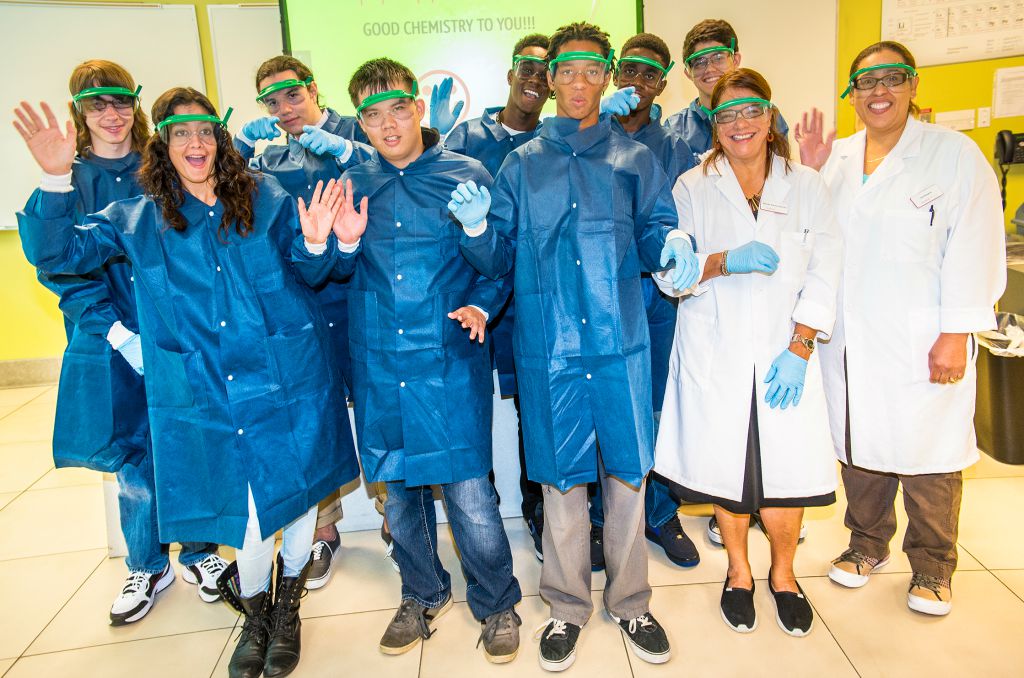“Who wants to be a planet?”
When Valencia College physics professor Richard Jerousek posed that question to a handful of incoming freshmen – to see who wanted to ride a hovercraft and pretend to orbit around the sun — Benjamin Leheup leaped at the chance.
“I’ll do it,” said Leheup, 18, and sat down on the hovercraft – which looked more like a big circular welcome mat attached to a leaf blower.
But sure enough, when the hovercraft fired up, Leheup took off – circling the “sun” (which was really Jerousek holding onto a post) and winning the admiration of his fellow students.
For Leheup and 31 other students, the hovercraft adventure was just part of a week-long immersion in science, technology, engineering and math that Valencia holds each summer for graduating high school seniors. The Summer STEM Institute is part of a three-year effort to interest more minority and women students in STEM fields. The summer program is supported by a grant from The National Science Foundation under the Louis Stokes Alliances for Minority Participation (LSAMP) Program.
But for these recent high-school graduates, the week of seminars was better than dry lectures on science – instead giving them the chance to do the kind of hands-on scientific work that they love. They conducted many cool experiments – and learned about a wide variety of careers – they can have in science.
“Physicists work in hospitals, in nuclear power plants, in astronomy,” said Jerousek, a Valencia College physics professor and research scientist who is studying Saturn’s rings. “If you go to grad school, you get to do cutting-research, often with state-of-the-art equipment and with professors who have research budgets of $1 million a year or more.”
In a chemistry lab, the students learned tricks that would make the slimemasters at Nickelodeon Studios proud. Wearing lab coats and goggles, they combined sodium borate with fluorescein and a bromophenol blue solution – along with a thickener, guar gum, that’s often used in processed foods – to create fluorescent green slime. “It was pretty cool to get to use and interact with all the equipment in the lab,” said Michael Collazo, who graduated from Edgewater High School’s Engineering Science Technology program and is headed to Valencia this fall.
Yet perhaps the most valuable experience, said 18-year-old Doche Adonis, who just graduated from Evans High School, was meeting the other students in the Institute. “It’s been cool meeting people just like me – fellow geeks who are interested in science.”
https://www.youtube.com/watch?v=wPdeeCapygw
Summer experiences such as Valencia’s Summer STEM Institute are critical to firing up students’ passions for STEM majors. “By offering the Summer STEM Institute, Valencia College presents students with STEM as a real and attractive possibility, helps them explore different areas of STEM, and fosters the students’ connections with faculty, staff, and STEM professionals so that an education and a career in STEM become personal and meaningful,” said Eda Davis-Lowe, former director of Oregon State University’s Science & Math Investigative Learning Experiences Program and now director of Valencia’s NSF grant program.
At the summer program, students also discovered the Valencia advantage — small classes and plenty of interaction with their professors. “As far as I’m concerned, every student who’s interested in college should start at a two-year school,” said Dr. Bob Gessner, a former veterinarian and now dean of Valencia’s science department. “In a university, you’re typically in a classroom of 300 to 400 people…Here at Valencia, you’re in a classroom with 24 to 28 other students. You get to know your professors and they get to know you.”
